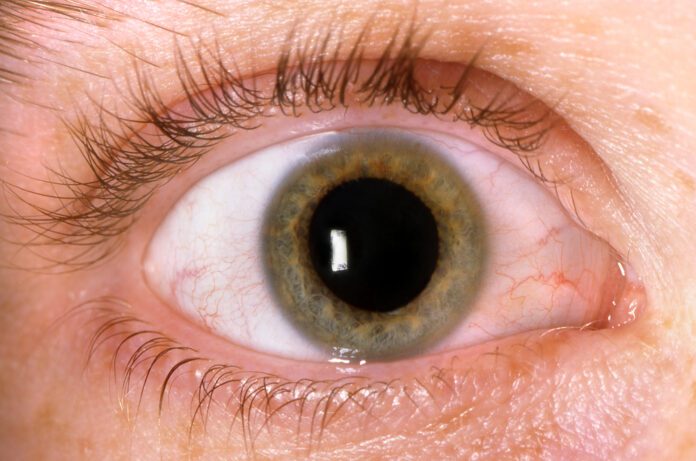Overview
Holmes-Adie syndrome (HAS) also called Adie Syndrome is a neurological disorder affecting the pupil of the eye and the autonomic nervous system. It is characterized by one eye with a pupil that is larger than normal and constricts slowly in bright light (tonic pupil), along with the absence of deep tendon reflexes, usually in the Achilles tendon. HAS is thought to be the result of a neurotrophic (acting on neurons, or nerve cells) viral infection that causes inflammation and damage to neurons in the ciliary ganglion, an area of the brain that controls eye movements, and the dorsal root ganglion, an area of the spinal cord involved in the response of the autonomic nervous system. HAS begins gradually in one eye and often progresses to involve the other eye. At first, it may only cause the loss of deep tendon reflexes on one side of the body but then progress to the other side. The eye and reflex symptoms may not appear at the same time. People with HAS may also sweat excessively, sometimes only on one side of the body. The combination of these 3 symptoms – abnormal pupil size, loss of deep tendon reflexes, and excessive sweating – is usually called Ross’s syndrome, although some doctors will still diagnose the condition as a variant of HAS. Some individuals will also have cardiovascular abnormalities. The HAS symptoms can appear on their own, or in association with other diseases of the nervous system, such as Sjogren’s syndrome or migraine. It is most often seen in young women. It is rarely an inherited condition.
Commonly Associated With:
Holmes–Adie syndrome, Adie’s tonic pupil, Holmes–Adie pupil, Adie syndrome
Cause
Currently, the exact cause of Adie Syndrome is unknown.
Medical experts believe that the following factors may contribute to Adie Syndrome:
• Neurosyphillis: It is a sexually-transmitted disease affecting the brain in its later stages
• Retinal detachment surgery
• Diabetes
• Giant cell arteritis (an inflammatory disorder of the blood vessels)
Symptoms
Common signs and symptoms of Adie Syndrome include:
• Slow pupillary reaction to stimuli such as light
• Dilated pupils (but in some individuals, it may be constricted)
• Difficulty reading
• Increased sensitivity to light
• Lack of reflexes (in the tendon, ankle, and knee)
• Excessive sweating
Treatment
Doctors may prescribe reading glasses to compensate for impaired vision in the affected eye, and pilocarpine drops to be applied 3 times daily to constrict the dilated pupil. Thoracic sympathectomy, which severs the involved sympathetic nerve, is the definitive treatment for excessive sweating.
Other
Holmes-Adie syndrome is not life-threatening or disabling. The loss of deep tendon reflexes is permanent. Some symptoms of the disorder may progress. For most individuals, pilocarpine drops and glasses will improve vision.
Source
https://www.ninds.nih.gov/Disorders/All-Disorders/Holmes-Adie-syndrome-Information-Page
https://www.dovemed.com/diseases-conditions/adie-syndrome/



